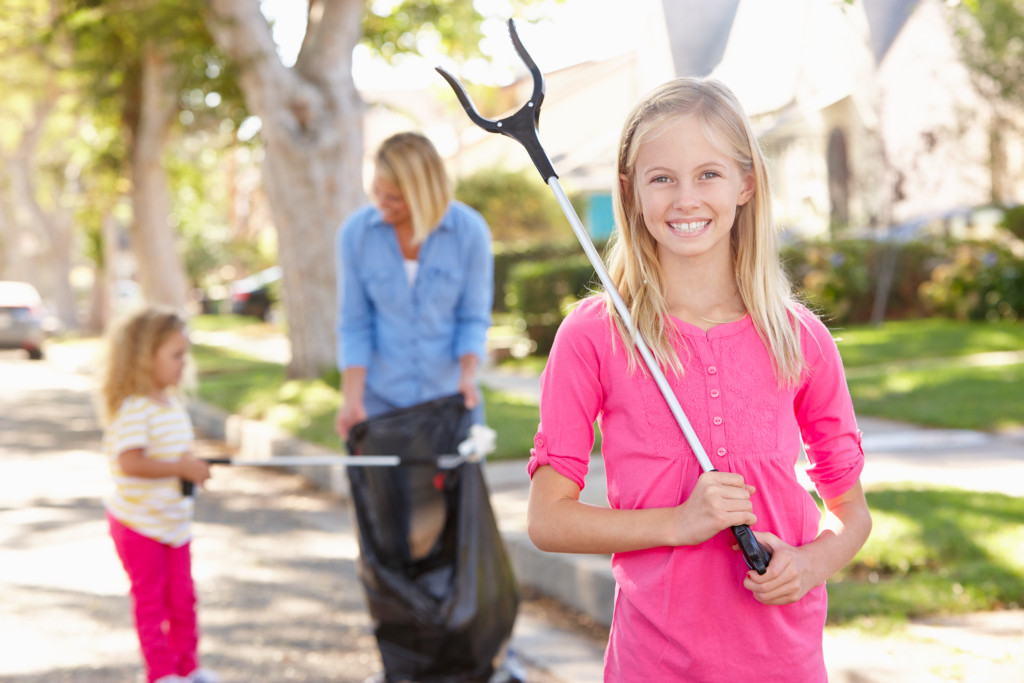- Start on your property by keeping the yard neat, investing in outdoor seating or décor, and installing concrete fencing walls.
- Plant trees and flowers to add color, texture, and life while providing wildlife homes, reducing air pollution, and lowering energy costs.
- Start a community garden to provide healthy food and give the community a unique learning opportunity.
- Join or create a cleanup group to contribute to the beautification of your community while promoting local businesses and organizations.
Many people do not realize how their communities’ appearance can significantly impact how visitors perceive the area. A good first impression is vital in creating an inviting atmosphere that encourages people to stay and explore.
Making your community more beautiful can be as simple as starting with small efforts like picking up litter, keeping walkways free of debris, and maintaining landscaping. But there are other ways you can go above and beyond in making your area look inviting.
Start on Your Property
One of the best places to start is by looking at your property. Keeping the yard and exterior of your home neat can go a long way in making your neighborhood look inviting. Make sure you mow the lawn regularly, trim back overgrown shrubs, plant flowers, and invest in outdoor seating or décor.
If possible, invest in concrete fencing walls, so your property is completely enclosed, making it look well-maintained and secure. This can also help to make the area look more inviting by providing a barrier to traffic noise and maintaining privacy.
Plant Trees and Flowers

Planting trees, shrubs, and flowers add color, texture, and life to a space. Trees also help clean the air by absorbing pollutants like carbon dioxide, which helps reduce global warming effects. To get started, here are some things to consider:
Why Plant Trees and Flowers?
The most apparent benefit of planting trees and flowers is that it can make your community more beautiful. But there are other benefits too. For example, trees act as carbon sinks that can help reduce air pollution by absorbing carbon dioxide from the atmosphere.
They also provide shade on hot days, which can help lower energy costs by reducing the need for air conditioning. Finally, they provide homes for wildlife such as birds, squirrels, and other animals.
Flowers have their own set of benefits too. For instance, they can attract beneficial insects that help keep pests away from crops or gardens in your area. They also provide food for pollinators such as bees, butterflies, moths, bats, birds, and even lizards! And of course, they look great too!
Tips for Planting Trees and Flowers
If you’re looking to spruce up your community with some new plants, here are some tips to get you started:
- Do research on which species will do best in your local climate.
- Choose native species whenever possible.
- Plan out where you will plant them before digging holes or buying pots for container plants.
- Talk with others in your community about what kind of plants would look good together or what species would work best in certain areas (e.g., near roadsides).
Start a Community Garden

There’s nothing quite like having your garden. Growing your own vegetables, fruits, and herbs provides you with healthy food and offers a unique opportunity for learning and community engagement. If you’re looking for an activity to bring people together and benefit the environment, consider starting a community garden!
Finding Space For Your Garden
The first step in starting a community garden is finding a suitable space. Depending on the size of your proposed garden, this could mean anything from a vacant lot or park to an empty patch of grass behind an apartment building. No matter where you choose to plant your garden, get permission from the landowner before proceeding with any plans.
Gathering Resources
Once you’ve selected a suitable space for your garden, it’s time to gather resources for the project. You’ll need soil (or potting mix if growing indoors), seeds or seedlings, tools like shovels and trowels for digging holes and planting seeds, and compost or other organic materials for nourishing the soil. Depending on the size of your garden and its location, you may also need some fencing or barriers to keep animals away from the plants.
Join or Create a Cleanup Group
Joining or creating a cleanup group is another excellent way to contribute to beautifying your community while bringing people together with shared interests in improving things on both an environmental and social level. These groups often plan regular cleanups throughout their area so that anyone can join anytime without much commitment!
In addition, volunteering at local events like festivals or parades helps keep them running smoothly while promoting local businesses and organizations in the area – two things essential in keeping any community vibrant!
Final Thoughts
Contributing to the beautification of your community doesn’t have to involve grand gestures; even small efforts can make a big difference when enough people join in together! There are countless ways to show our care and appreciation for where we live – these five ideas are just some examples of how we can get started today!


